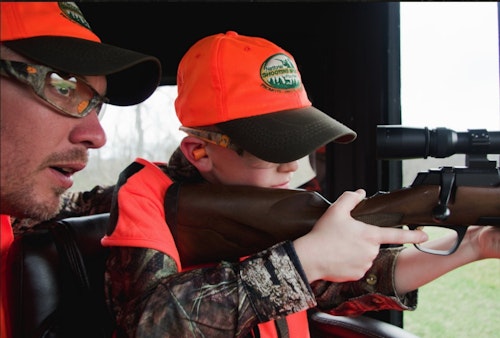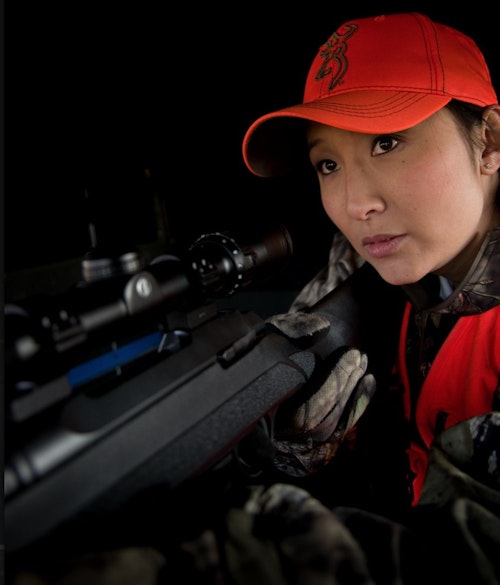When I manned the gun counter at a largish sporting goods outlet, it was common to serve customers looking to buy themselves or a loved one their first hunting rifle. The fact these customers’ opening line went something to the effect of “I’m looking for a rifle for (type of hunting or relative)” told me they had little idea where to begin. Experienced hunters were invariably more resolute, typically declaring, “I’m looking for a (preferred brand) in (preferred cartridge).” That made things easy; it was a simple matter of checking inventory for the availability of whatever item they had in mind.
But when you're dealing with less experienced rifle customers, especially first-time buyers, require more probing and insight borne of in-field experience to match actual needs or even tolerance levels.
This is more pointed when customers are buying big-game rifles for girlfriends, wives or youth hunters. It’s safe to say that in most cases, the person who will be receiving that rifle has little or no centerfire shooting experience, so they have not developed a tolerance for heavy recoil and obnoxious muzzle blast (shotgun recoil is a different matter entirely). I would contend that shot noise causes more flinching than recoil.

It wasn’t uncommon to be faced with customers making obviously ill-informed decisions. I vividly recall a 98-pound girl who earnestly insisted she wanted a .300 Remington Ultra Mag, only because it was more powerful than her brother’s .300 Win Mag. After further quizzing, she confessed she’d never shot anything larger than the family’s .223 Remington. It was an obvious recipe for disappointment and a nasty case of the flinches.
This assessment certainly isn’t isolated to women. There are plenty of men for whom the .300 RUM would prove a poor choice (myself included!); despite the magazine article declaring it the ultimate big-game medicine. I could’ve rung that petite girl up and sent her on her merry way, but I would have been blamed when she discovered her grave error. Instead, I carefully coaxed her into something better suited to her needs and capabilities
Inexperienced Riflemen
Customers marginally familiar with shooting but new to big game hunting, even if they have no real grasp on what they will be pursuing down the road, are actually fairly easy. My basic approach was to steer them away from exotic cartridges and the biggest boomers and suggest a readily available classic. Cartridge choice, particularly for Western residents, might require handling anything from average deer to perhaps elk.
This suggests mid-sized cartridges in the .270 Winchester, .308 Winchester, .30-06 Springfield, and more recently, the 6.5 Creedmoor, class. All, when paired with suitable ammo (translating into proper bullet construction), will easily handle any commonly hunted animal in North America — given proper shot placement, of course. In the wildly popular 6.5 Creedmoor, for instance, bullet choices might include (using Federal Premium as an example) a 130-grain Terminal Ascent or 135-grain Berger Hybrid Target for deer and 140-grain Nosler AccuBond or 140 Fusion Rifle for large black bear or elk.
Eastern customers are even simpler, especially if they’re only interested in collecting some local venison for the freezer, eliminating the big stuff from the equation. For whitetail hunters plying the heavily wooded East, the .30-30 Winchester is still difficult to beat. Any of the .308 Winchester derivatives, such as the .243 Winchester, .260 Remington, 7mm-08 Remington and .338 Federal — and the .308 itself — make wonderful deer rounds, especially if a new hunter might be recoil shy.
New Women and Youth Shooters
I would be the last to suggest all women are automatically excluded from magnum cartridges. My good friend Kirstie Pike, owner of Prois (maker of high-tech women’s hunting attire) and the very definition of petite, has shot critters around the globe with her biting Weatherby 6.5-300 Magnum.
That said, there is generally no better way to turn beginners — particularly small-framed shooters — off to shooting than to hand them a rifle delivering punishing recoil. Make sure the rifle they purchase offers a proper fit, because an ill-fitted rifle accentuates felt recoil. The industry has responded to the growing ranks of women and youth shooters with scaled-down stocks or adjustable systems accommodating various-sized shooters, so this isn’t the problem it once was.

It’s also important to ask enough questions to gain a firmer grasp on what animals might be targeted. Here in Idaho, for instance, deer are certainly popular, but elk are the bigger seasonal draw, as everyone loves elk meat and we have plenty of them. This likely applies to many western states, especially those where youth cow elk hunts are common. For these customers, I usually suggest a 6.5 Creedmoor or 7mm-08 Remington as first choices, the .260 Remington or .308 Winchester also viable. These are rounds big enough to cleanly kill elk (with ammo loaded with quality, controlled-expansion bullets) but also producing mild recoil.
In the East, when whitetail deer and wild hogs are the only big game on the menu, I would suggest a .243 Winchester (what I grew up on), or newer cartridges such as the .224 Valkyrie, .300 AAC Blackout or .350 Legend (paired with proper ammunition). The latter, in particular, offers ultra-pleasant shooting, but is also deadly on medium-sized game such as deer and hogs.
Petite ladies believing a .300 RUM will make them “one of the guys” are fortunately the exception in rifle-selling scenarios. Customers new to the centerfire arena will eagerly look to you for help in making informed decisions, and a little gentle and diplomatic guidance can go a long way toward creating happy repeat customers.






